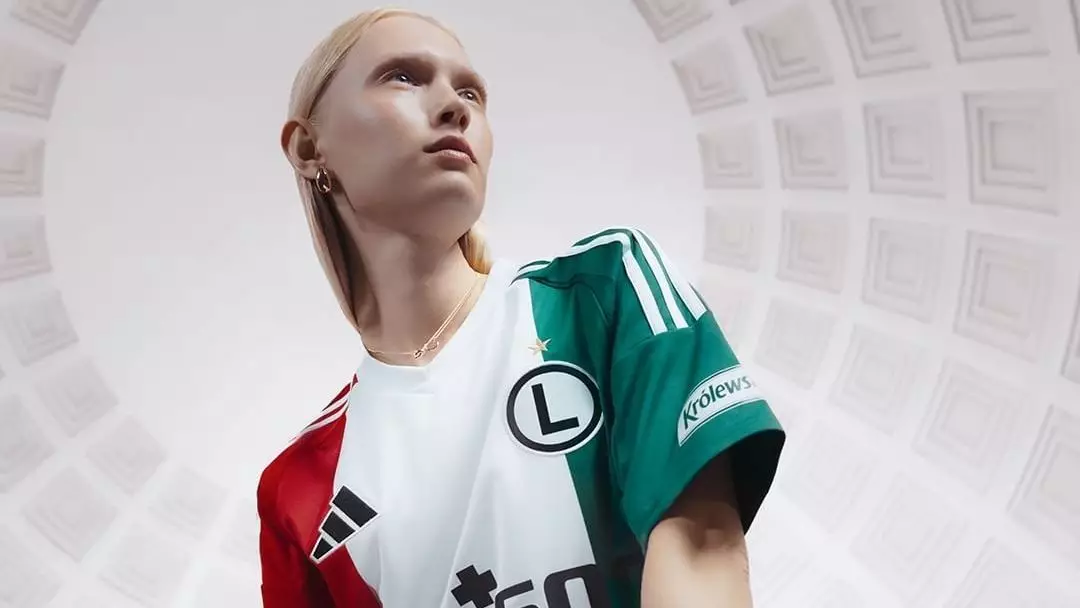Football is not merely a sport; it is an embodiment of culture, passion, and, increasingly, fashion. Each season, teams around the globe unveil new kits that reflect their history, ethos, and aesthetic sensibilities. The ongoing season is no exception, showcasing a plethora of stylish and innovative designs that capture the imagination of players and fans alike.
One of the most captivating aspects of this season’s kits lies in the artistry of their designs. Designers are stepping beyond traditional norms, incorporating elements that resonate on multiple levels—from historical references to contemporary aesthetics. For instance, the combination of deep navy and gold has long been revered for its regal appearance, and this season is no different. A classic chevron pattern alongside the reimagined heritage logos not only pays homage to past glories but also adds a sophisticated touch to the modern sporting aesthetic.
Notable is the new third kit from Bari. The smokey grey shirt draws inspiration from the stunning sixth-century mosaics located within the Cathedral of San Sabino. By weaving in cultural landmarks into the fabric of the kit, the designers have managed to infuse a sense of identity and pride that transcends the mere functionality of the clothing.
Celebrating Heritage
The importance of heritage and storytelling cannot be overstated in this season’s designs. Take, for example, Bayer Leverkusen’s modern homage to their early days. The special-edition black kit is characterized by vintage aesthetics, complete with an old crest and distinctive collar details. This captivated fans who appreciate both innovative design and a connection to the club’s storied past. The beauty of such kits lies in their capacity to evoke nostalgia while providing players with a platform that feels contemporary and fresh.
Furthermore, Bayern Munich’s collaboration with fashion model Lena Gercke has resulted in an eye-catching kit aimed at raising awareness for breast cancer. The vibrant harlequin pattern in shades of pink stands out amidst a landscape of more traditional colors. By bridging fashion and social causes, this kit speaks to a growing trend in the world of sports, where socially conscious messages are communicated through design.
Another fascinating aspect of this season’s kits is how teams are celebrating their local identities. Brisbane Roar’s away jersey, designed by the club’s inaugural captain, features an exquisite maroon and cream checkerboard pattern that intricately incorporates elements from the club’s lion crest. This intelligent design choice offers a sense of local pride and a strong connection to the history of the club.
In that vein, the Scottish Braves’ new home and away kits are inspired by tartan patterns, attributed to the distinguished architect Charles Rennie Mackintosh. Such choices are significant in that they bring a piece of the local heritage into the global arena of football, illustrating how cultural narratives can be effectively communicated through sports apparel.
National Identity Through Jerseys
The aesthetics of national teams and their kits also exhibit a profound narrative of identity. Cambodia’s national football team has cleverly designed a series of kits that pay tribute to the architectural splendor of Angkor Wat. With woven patterns inspired by the temple’s grandeur, these kits become a celebration of national heritage on both the domestic and international stages.
Moreover, Colombia’s centenary kit pays respect to its own history by resurrecting variations of its traditional designs from the 1940s. Featuring a tricolor pattern reminiscent of past victories, the kit garners attention not only for its visual appeal but for its role in storytelling—a bridge connecting generations of players and supporters.
Innovative Materials and Sustainability
As we analyze the fashion-forward nature of this season’s football kits, it is vital to consider how innovation in materials also plays a crucial role in their design. Modern fabrics, which are often lighter and more breathable, drastically enhance player performance. Clubs are increasingly focusing on sustainable practices, utilizing recycled materials and environmentally friendly processes. This shift not only serves to address environmental concerns but also aligns with the modern consumer’s preference for ethical branding.
In sum, the 2024-25 season is seeing football kits evolve into veritable works of art that honor traditions while boldly stepping into the future. The infusion of cultural narratives, innovative designs, and sustainable practices reflects a rapidly changing landscape in the world of football. Whether worn on the pitch or admired from the stands, these kits are not just garments; they are symbols of identity, pride, and the ever-growing intersection of sport and fashion. As we look forward to the future, it is clear that this trend will only deepen, transforming the humble football kit into an essential part of the global sporting narrative.
